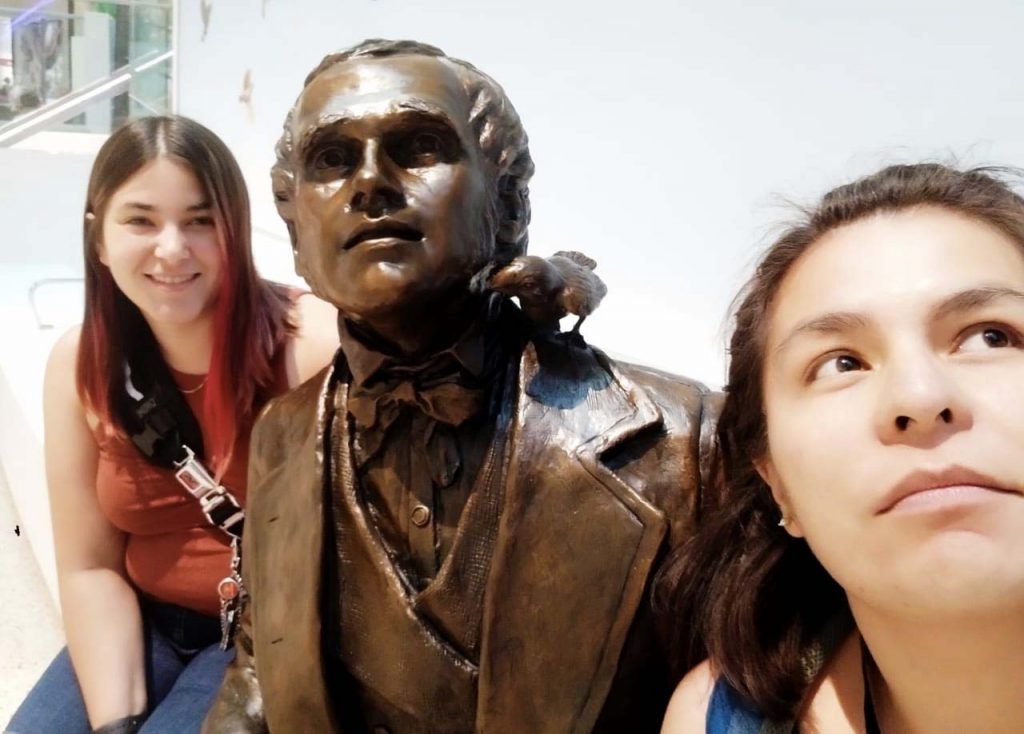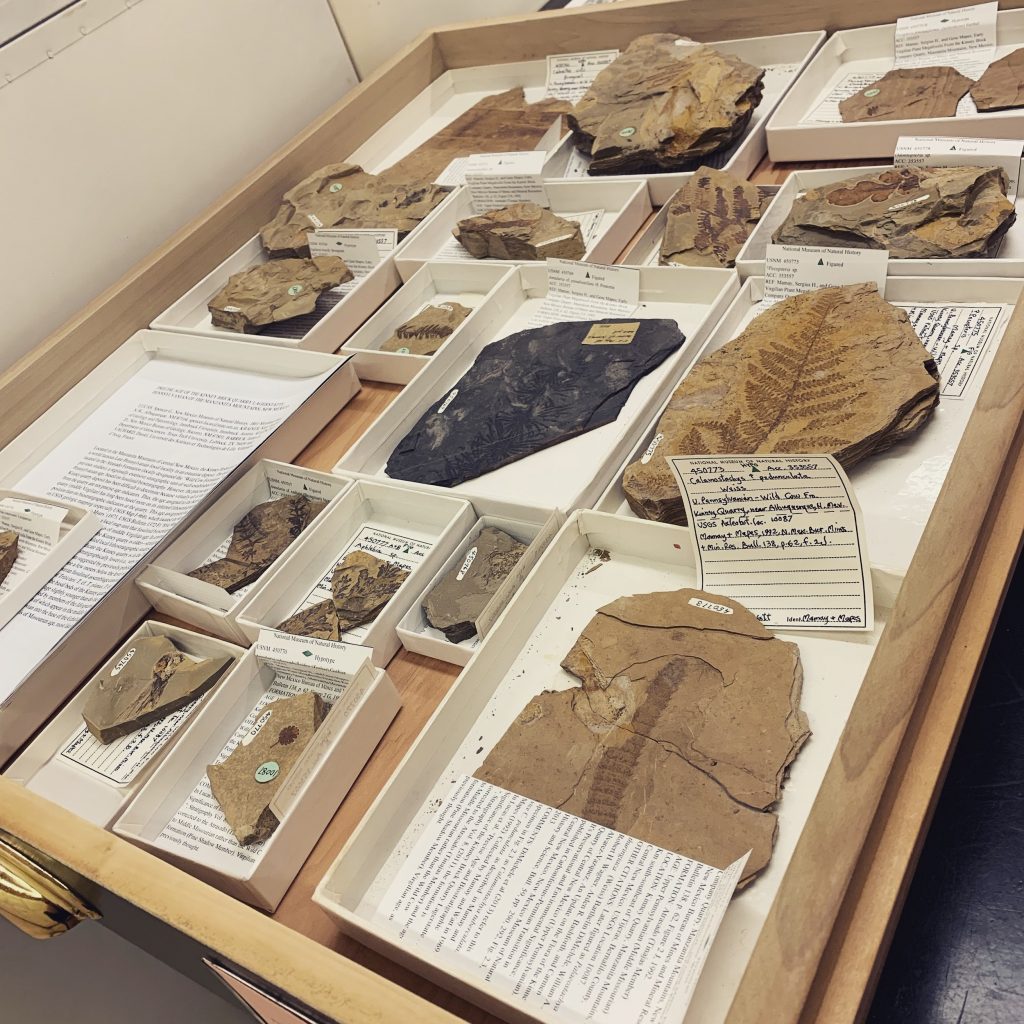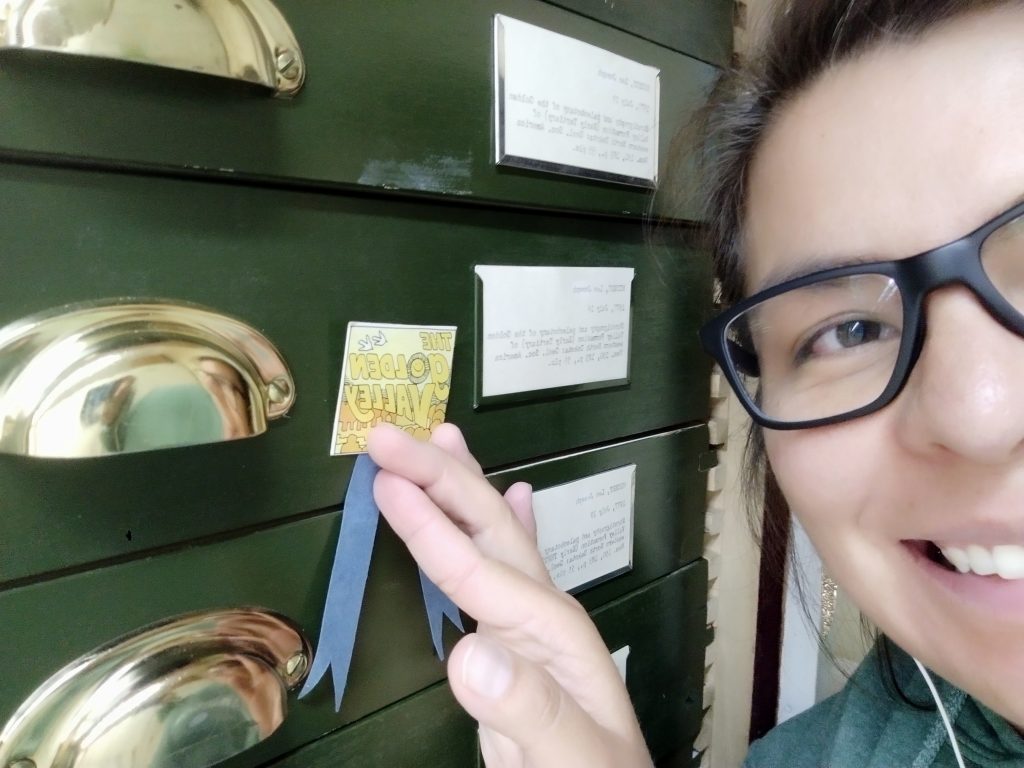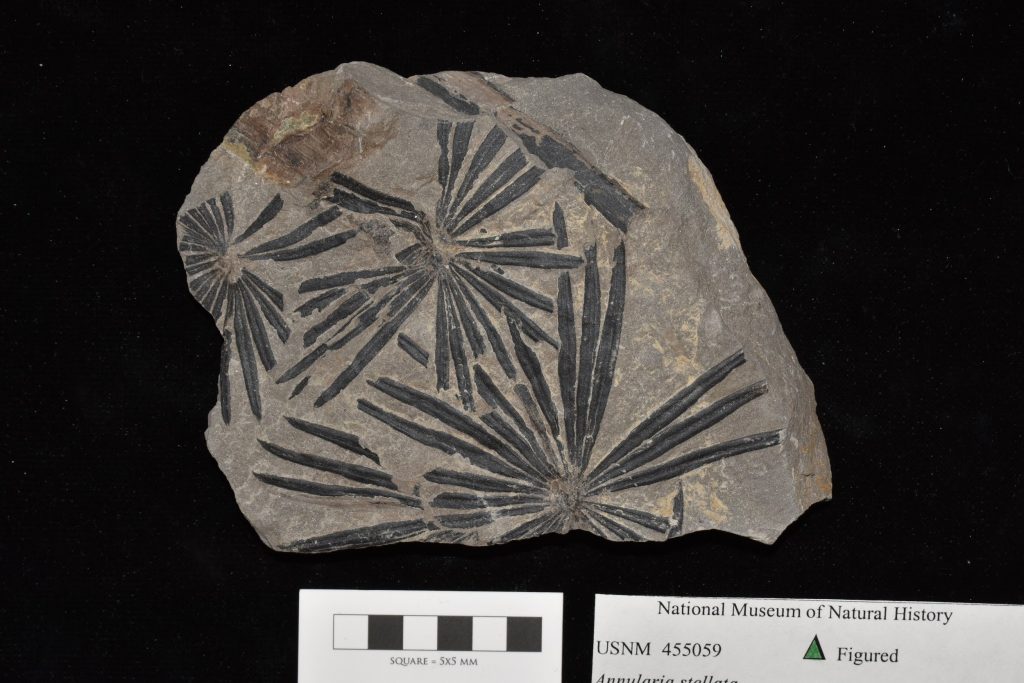
During the summer of 2019 we (graduate students Mackenzie Kirchner-Smith and Ixchel Gonzalez-Ramirez) spent a month working in the Paleobotanical Collections of the National Museum of Natural History (NMNH) in DC as part of the NSF-sponsored Pteridophyte Collection Consortium project (PCC). This project, led by PIs Carl Rothfels, Diane Erwin and Cindy Looy, seeks to digitize more than 1.7 million modern and fossil pteridophyte specimens. During the month at the NMNH we digitized more than 700 pteridophyte specimens from the Paleobotanical Figure and Type Collection. The digitization process included taking photographs of the specimens and building databases that include their taxonomy, locality, geochronology, and all the references that figure and/or describe them.

Digging through the Smithsonian collections, we traveled back to the Devonian when the landscape was dominated by early vascular plants like Psilophyton and Serracaulis. We also digitized lycopod specimens like Lepidodendron from the Carboniferous swamp forests. Working with these collections was amazing since it allowed us to see famous type specimens that we had only read about such as the lycopods Baragwanathia, Drepanophycus, Sigillaria, Lepidodendron, horsetail relatives Calamites and Sphenopteris, Pecopteris ferns, and the progymnosperm Rhacophyton. Also, it was very impressive and satisfying to see some specimens with well-known living relatives (like Gleichenaceaphyllum, Osmundacaulis, Lygodium, Woodwardia, and Isoetites) and observe the same diagnostic characters in both living and fossilized specimens!
Not only did the specimens we digitized cover a wide taxonomic and temporal scale, but they also were collected in 28 different states across the US. The inclusion of fossil specimens in the PCC project is one of its greatest contributions, being particularly important in a group like pteridophytes that has such a rich and diverse fossil record. The records from our project will be uploaded in the PCC portal making the information available for researchers around the world. We expect that different research groups will use this information to work on topics as diverse as genetics, morphology, taxonomy, biogeography, evolution, and global change.

